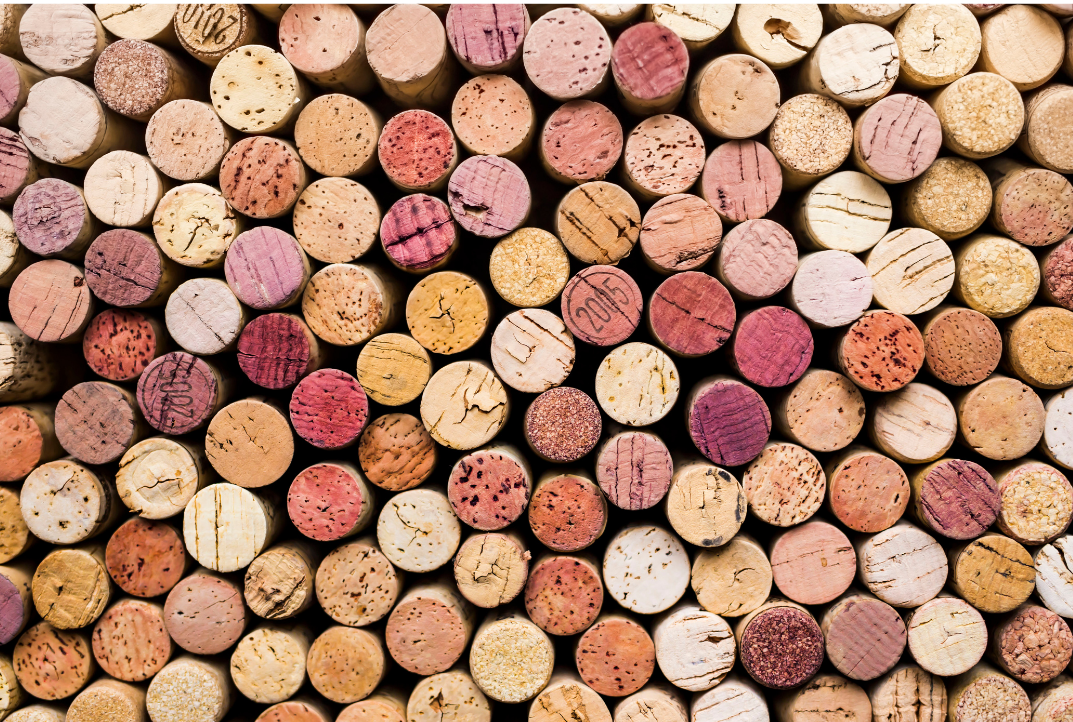
Is a cork or a screw cap better?
Share
When and why was cork first used?
Cork is obtained from a tree called the cork oak , which reaches a height of up to 20 meters. Its bark (part of the dead bark) is peeled off in large sheets , from which natural cork is obtained. It is found in the western Mediterranean, the Iberian Peninsula and North Africa. Portugal produces roughly half of the world's cork production. To give you an idea, this is 200,000 tons of cork per year.
A quality cork for use as a stopper in wine bottles can be peeled from the tree every 8-12 years , when its bark grows again. The first harvest takes place approximately 25 years after the first planting. For really high- quality natural cork, you have to wait for the third harvest , i.e. roughly 70 years. The bark of the cork oak can peel off only for three months - from June to August.
 Evidence of the use of cork dates back to the ancient Greeks and Romans. However, the tight-fitting cork we know today was not popularized until the 18th century in conjunction with the first user-friendly corkscrew. Until then, French winemakers used oil-soaked cloths to cork wine bottles instead of corks. The inventor of wine corks is unknown, but some stories attribute it to the Benedictine monk Dom Pérignon.
Evidence of the use of cork dates back to the ancient Greeks and Romans. However, the tight-fitting cork we know today was not popularized until the 18th century in conjunction with the first user-friendly corkscrew. Until then, French winemakers used oil-soaked cloths to cork wine bottles instead of corks. The inventor of wine corks is unknown, but some stories attribute it to the Benedictine monk Dom Pérignon.
Due to its expandability, the cork functions on the one hand as a seal for the liquid in the bottle and on the other hand prevents oxygen from penetrating inside the bottle . However, its tiny pores allow tiny amounts of air to interact with the wine, which can change the aroma and taste over time. A small amount of air inside the bottle helps to smooth out the tannins, which give a velvety mouthfeel, but can also create a harsher taste. In addition, the air oxidizes the tannins, which makes them softer and makes the wine even more drinkable.
Cork vs screw cap
Cork is a natural material and therefore its quality is different every time. The porosity of the cork affects the rate of interaction of the air with the wine in the bottle. Even if the winemakers choose the cork carefully, there is always a question mark as to whether it will have a defect that can manifest itself in the wine as a "cork flavor". Depending on the quality and brand, corks can be up to three times more expensive than screw caps. And this also affects the final price of the wine.
The cork dries out and falls apart over time, and in order to maintain its properties, the wine must be stored properly. The quality of cork is also threatened by the chemical compound 2,4,6-trichloroanisole , or TCA . This is created during the processing of cork, during which chlorine is used to treat certain fungi. Although this compound is harmless, it can transfer to the wine and cause a wet cardboard aroma. Studies have revealed that TCA causes so-called " corky taste " in up to 10% corked wines.
Under the screw cap, TCA is almost non-existent. Because wines have less interaction with oxygen compared to cork, winemakers can theoretically reduce the amount of sulfur dioxide before bottling. Some experts even claim that aluminum stoppered wines have a longer shelf life and do not age or age more slowly than corked wines due to the impermeability of oxygen .
It's a trend of the last 20 years that some wineries have started to turn to. Australian and New Zealand winemakers in particular started a revolution when they decided to favor screw caps over cork. In 2001, New Zealand introduced an initiative called " Screw Cap Wine " because New Zealand vintners found that closing the bottle with a screw cap was much better at preventing spoilage and contamination of the wine with cork. More than 90 percent of New Zealand wines are now sealed in this way .

The disadvantage of screw caps is that they are made of aluminum and thus have a negative impact on the environment. Aluminum processing is not the cleanest process. Annually, aluminum generates approximately 70 million tons of waste. Although aluminum is non-biodegradable, and although it is recyclable, there is no 100% guarantee that most screw caps will not end up unsorted in the waste bin.
A summary of the pros and cons
However, many wine lovers cannot imagine opening a bottle without that typical sound when the cork is pulled. With a screw cap, this problem is eliminated. Just turn the bottle once and the wine is open.
Natural cork is a more sustainable material than aluminum, but once in a while you may open a cork-flavored wine or have the cork crumble into your wine. You just can't avoid it. However, it is definitely not possible to say that wines with a screw cap are of lower quality than those closed with a cork. In general, most experts from the wine industry recommend corking wines intended for archiving.
We will not give you advice on which type of closure you should prefer. We'll leave the decision up to each of you. All New Zealand wines on our e-shop are only with screw caps.
Where do you rank? Do you prefer the traditional ritual of opening a bottle with a cork or do you welcome the ease of opening bottles without much effort?
